

This
church has a long history of alterations. Originally a single-aisled
tuff church in Romanesque style, which in the mid-13th century was
extended with a transept and a new rectangular choir. At first the
church was consecrated St. Willibrord, later the name was changed to
St. Michaël.
Ca. 1300 the construction of the tower started, which lasted for most
of the century. This tower has a rectangular base, and is in a style
that clearly illustrates the transion from Romanesque to Gothic. The
top of the tower is unique. The saddle roof is uncommon for this part
of the country, but the way its ends are sloped is without an equal. At
the east side of the roof is an extension for the carillion, added in
1601.
The porch which runs from north to south is more common, although
mostly in the former county of Holland, to which Oudewater belonged at
the time. This is probably for safett reasons, the river Ijssel running
very close to the church.
At the end of the 14th century a closure of five sides was added to the
choir. In the early 15th century the choir was flanked with straightly
closed side-choirs with big windows in their east ends, resulting in a
hall-choir. At the same time a transept was built of the same width as
the enlarged choir. In the mid-15th century side-aisles were added.
These were of equal height and width as the nave, making the building a
three-aisled hall-church. Because of space limits, the southern
side-aisle is slightly shorter, which resulted in a diagonally
positioned facade.
In 1572 the St. Michaël became a protestant church, after the town had
chosen the side of the prince of Orange against the king of Spain. The
church survived the big fire of 1575, when Spanish troops destroyed
most of Oudewater and killed half of its population. In 1732 the gables
and roofs of the transept were removed. During a restoration in
1960-1967 these were rebuilt, while a coat of plaster was removed from
the entire outside of the church.
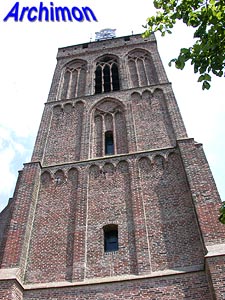




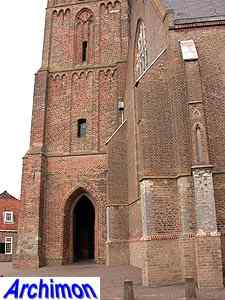



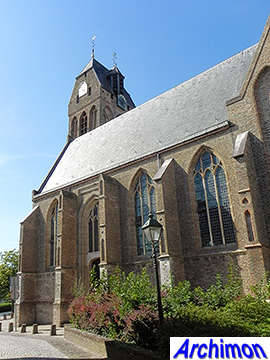


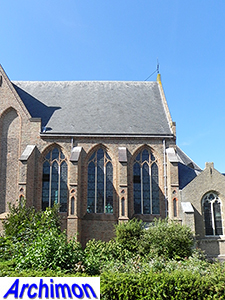
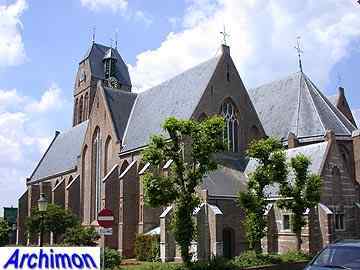

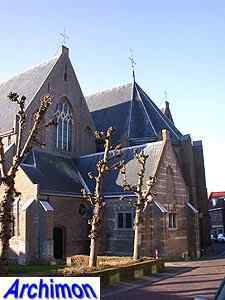
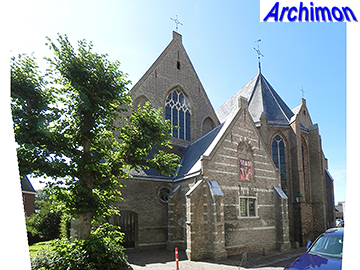
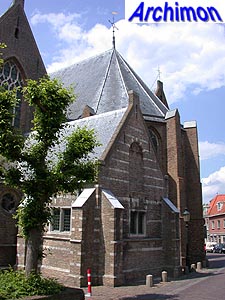
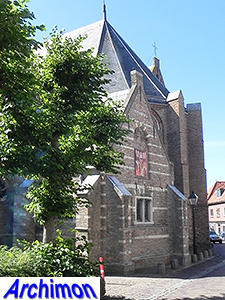
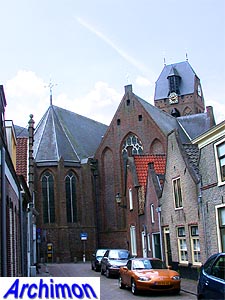
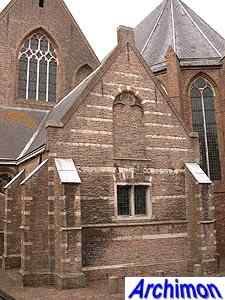
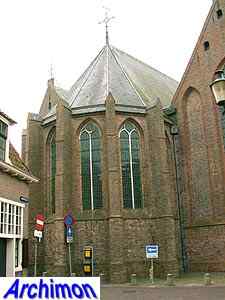
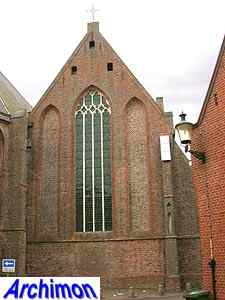
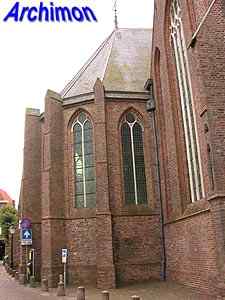

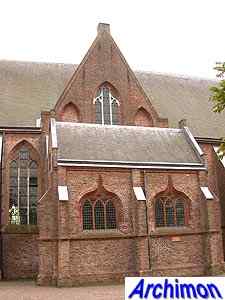
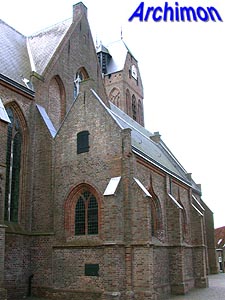

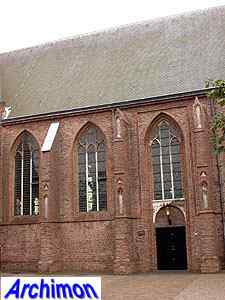

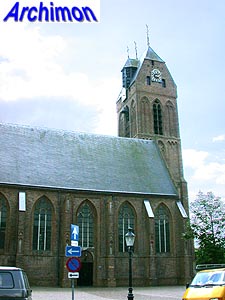
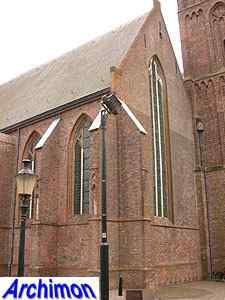
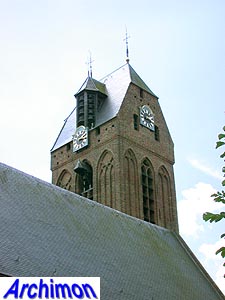
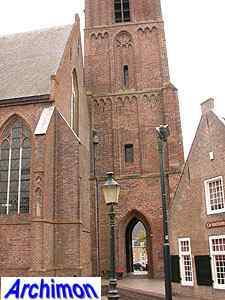
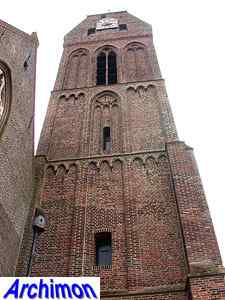

Back to Oudewater